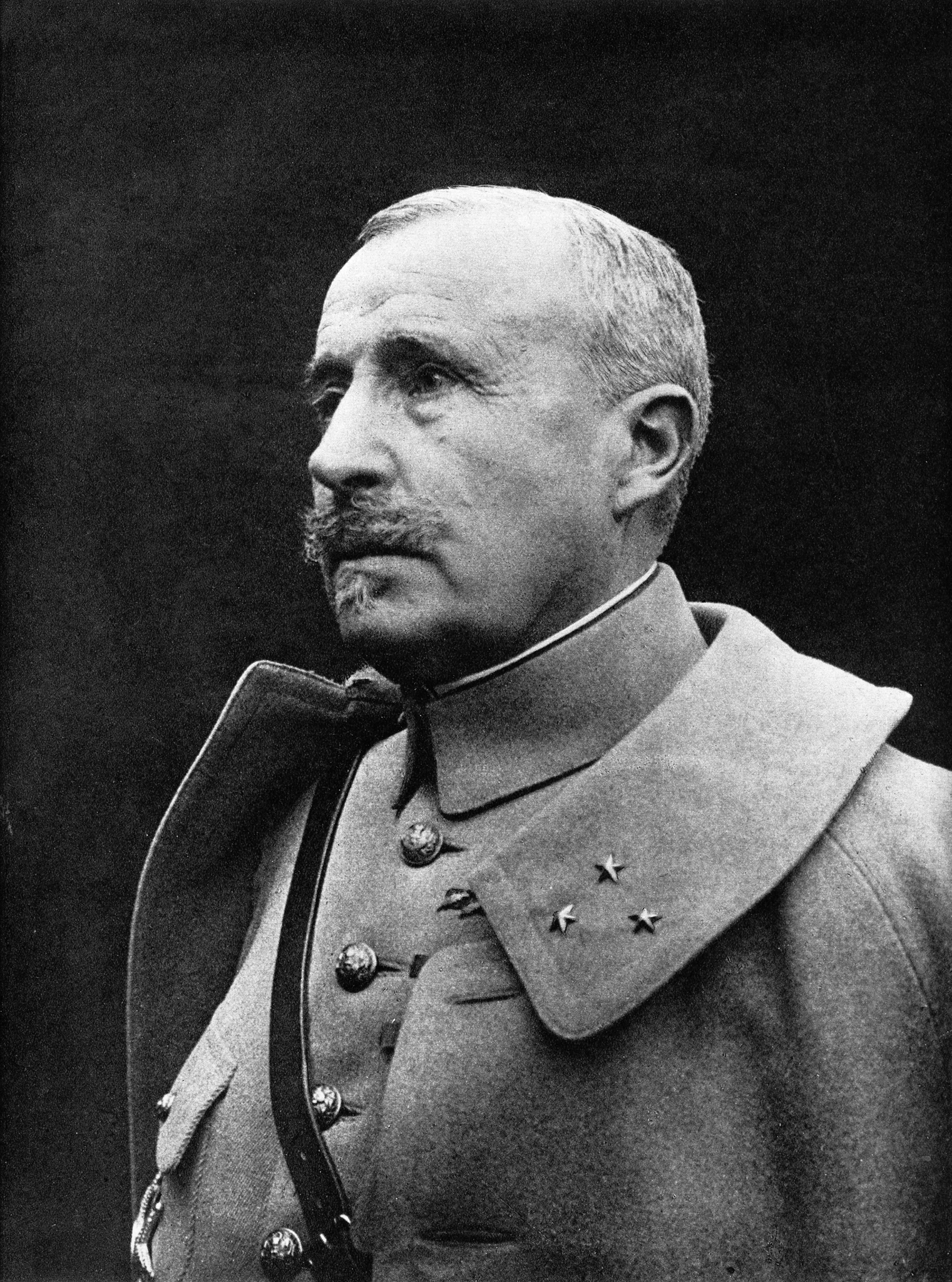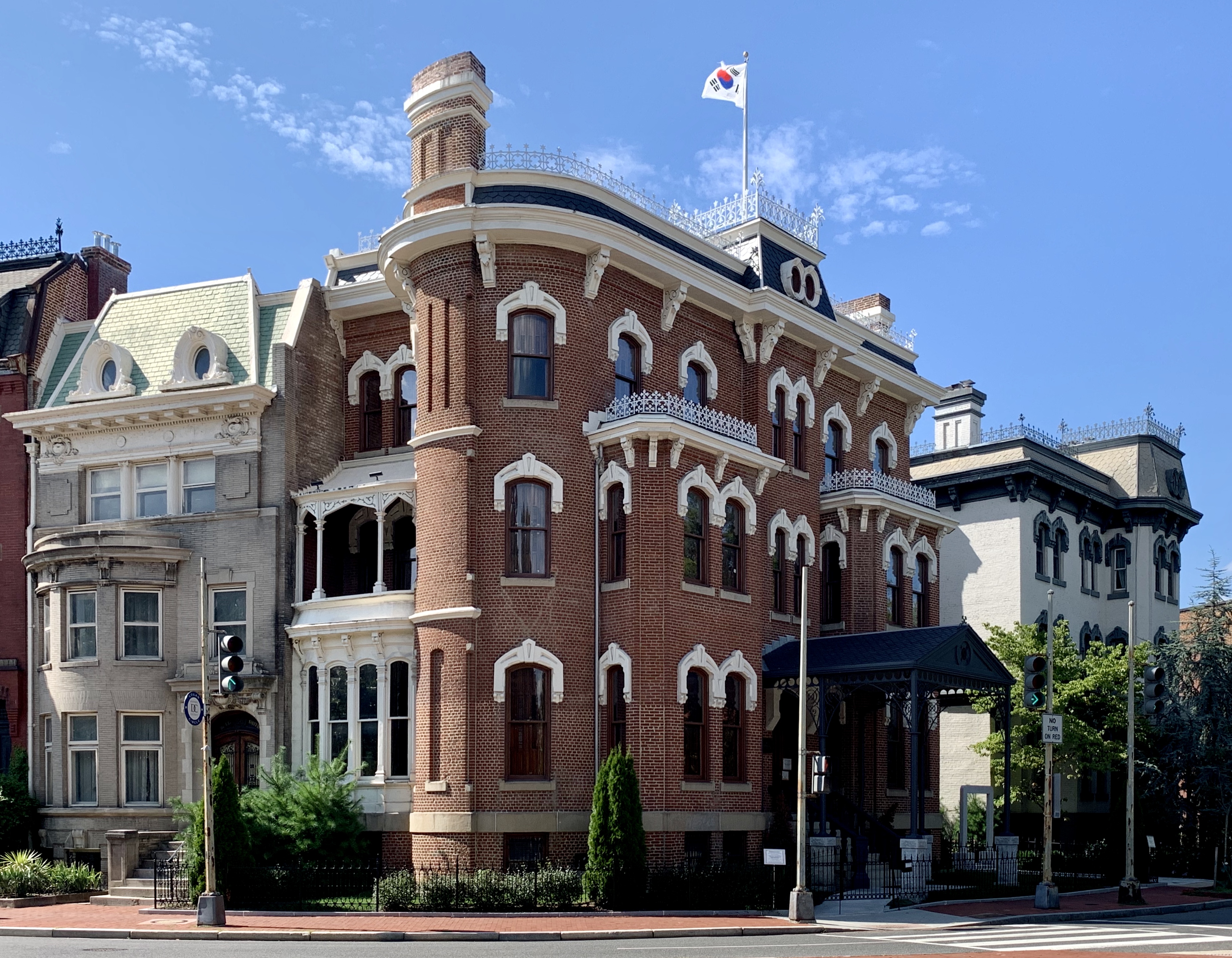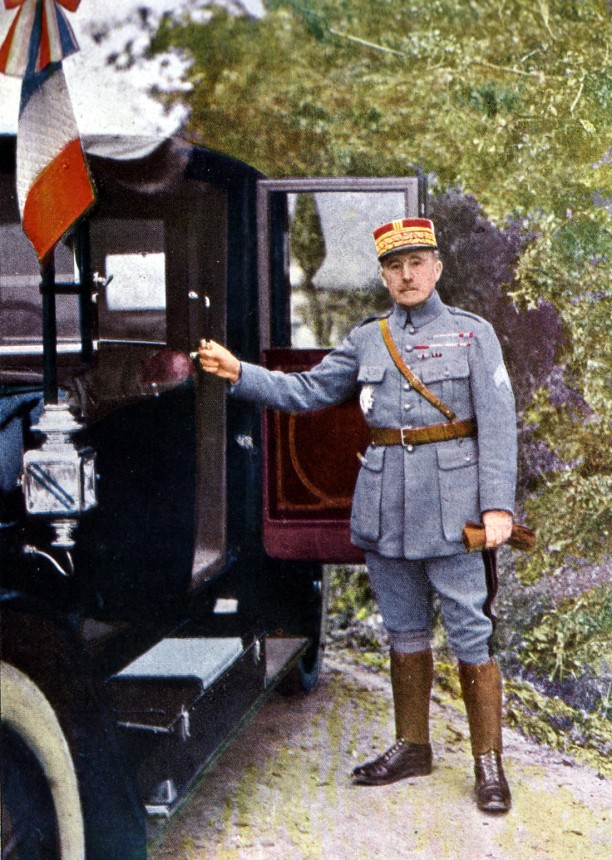|
1901 China Expedition Commemorative Medal
The 1901 China expedition commemorative medal (french: "Médaille commémorative de l'expédition de Chine (1901)") was a French military campaign medal established by the law of 15 April 1902 to recognize service in China in 1900 and 1901 during the Boxer Rebellion. In May 1900, an uprising throughout Northern China threatened the interests of nations with established concessions in major cities and leased territories in the Empire of China. This hostility against these powers was mainly driven by a secret nationalist and xenophobic group called "the Society of Righteous and Harmonious Fists", hence the name "Boxers" given to its members. It was decided by eight major powers (Germany, Austria, United States, France, Britain, Italy, Japan and Russia) to establish an international army of 150,000 men under the supreme command of German Field Marshal Count von Waldersee to rescue their besieged compatriots in Peking and put down the rebellion in the provinces. Allied troops en ... [...More Info...] [...Related Items...] OR: [Wikipedia] [Google] [Baidu] |
Boxer Rebellion
The Boxer Rebellion, also known as the Boxer Uprising, the Boxer Insurrection, or the Yihetuan Movement, was an anti-foreign, anti-colonial, and anti-Christian uprising in China between 1899 and 1901, towards the end of the Qing dynasty, by the Society of Righteous and Harmonious Fists (), known as the "Boxers" in English because many of its members had practised Chinese martial arts, which at the time were referred to as "Chinese boxing". After the Sino-Japanese War of 1895, villagers in North China feared the expansion of foreign spheres of influence and resented the extension of privileges to Christian missionaries, who used them to shield their followers. In 1898 Northern China experienced several natural disasters, including the Yellow River flooding and droughts, which Boxers blamed on foreign and Christian influence. Beginning in 1899, Boxers spread violence across Shandong and the North China Plain, destroying foreign property such as railroads and attacking or ... [...More Info...] [...Related Items...] OR: [Wikipedia] [Google] [Baidu] |
Legations
A legation was a diplomatic representative office of lower rank than an embassy. Where an embassy was headed by an ambassador, a legation was headed by a minister. Ambassadors outranked ministers and had precedence at official events. Legations were originally the most common form of diplomatic mission, but they fell out of favor after World War II and were upgraded to embassies. Through the 19th century and the early years of the 20th century, most diplomatic missions were legations. An ambassador was considered the personal representative of their monarch, so only a major power that was a monarchy would send an ambassador, and only to another major power that was also a monarchy. A republic or a smaller monarchy would only send a minister and establish a legation. Because of diplomatic reciprocity, even a major monarchy would only establish a legation in a republic or a smaller monarchy. For example, in the waning years of the Second French Empire, the North German Confeder ... [...More Info...] [...Related Items...] OR: [Wikipedia] [Google] [Baidu] |
Military Awards And Decorations Of France
This is a list of some of the modern orders, decorations and medals of France. Some like the Legion of Honour are awarded to both the armed forces and civilians. Others are decorations of a pure civilian or military character. Only four of the 19 Ministerial orders have survived the reform of the French system of decorations in 1963. The others were replaced by the Ordre national du Mérite. The Grand Chancery of the Legion of Honour classifies the national system of honours of France into two categories: those honours awarded on behalf of the President of the Republic and ministerial honours. The orders and decorations presented on behalf of the president are the Legion of Honour, Order of Liberation, Military Medal, National Order of Merit, and National Medal of Recognition for victims of terrorism. The ministerial honours include French military decorations, the existing ministerial orders, ministerial awards for acts of courage and honor medals, and commemorative medals. Nati ... [...More Info...] [...Related Items...] OR: [Wikipedia] [Google] [Baidu] |
Tonkin Expedition Commemorative Medal
The Tonkin Expedition commemorative medal (french: Médaille commémorative de l'expédition du Tonkin) was awarded to all the French soldiers and sailors who took part in the battles of the Tonkin campaign and the Sino-French War between 1883 and 1885. The medal, decreed by a law of 6 September 1885, was minted at the Monnaie de Paris and distributed shortly before the Bastille Day parade on 14 July 1886 to around 65,000 soldiers and sailors. The medal was later awarded to participants in a number of earlier and later campaigns in Indochina, bringing the total number of recipients to 97,300. Law of 6 September 1885 The decision to issue a commemorative medal was enshrined in a law of 6 September 1885, whose text read as follows: Article 1. There is hereby established a commemorative medal for the Tonkin expedition and the military operations directed against China and Annam in 1883, 1884 and 1885. Article 2. The medal shall be of silver, 30 millimetres in diameter. On ... [...More Info...] [...Related Items...] OR: [Wikipedia] [Google] [Baidu] |
Commemorative Medal Of The 1860 China Expedition
The Commemorative medal of the 1860 China Expedition (french: Médaille commémorative de l'expédition de Chine de 1860) was a military award of the Second French Empire to reward soldiers and sailors who participated in the Anglo-French expedition to China during the Second Opium War. It was created by imperial decree on 23 January 1861, by Napoleon III. The British Empire had been engaged in an ongoing conflict with the Qing Dynasty since 1856 over legalizing the opium trade, expanding coolie trade, opening all of China to British merchants, and exempting foreign imports from internal transit duties. Following the 1857 general election in the United Kingdom, the new parliament decided to seek redress from China based on the report about the ''Arrow'' Incident submitted by Harry Parkes, British Consul to Guangzhou. The French Empire, the United States, and the Russian Empire received requests from Britain to form an alliance. France joined the British action against China, ... [...More Info...] [...Related Items...] OR: [Wikipedia] [Google] [Baidu] |
Charles Pierre Corvisart
Baron Charles Pierre René Victor Corvisart () (29 June 1857 – 7 May 1939) was a general in the French Army who rose to prominence in World War I and a diplomat. Biography Corvisart was the grandnephew of Napoleon I's personal physician Jean-Nicolas Corvisart, and son of Baron Francois Remy Corvisart Lucien (1824–1882), medical officer of Health Service of the French Second Empire. He was born at Château de Saint-Cloud, outside of Paris, and was a playmate of the Prince Imperial as a child. In 1877 he entered the École spéciale militaire de Saint-Cyr, where he specialized in cavalry. From January 1900 to July 1904, Corvisart was a lieutenant-colonel and military attache at the French embassy in Tokyo, Japan, and subsequently served as an official observer to Japanese operations in the Russo-Japanese War of 1904-1905. He was promoted to colonel in 1906. During his stay in Japan, he learned Japanese, and translates and annotated the official Japanese Field Service Regulati ... [...More Info...] [...Related Items...] OR: [Wikipedia] [Google] [Baidu] |
Raoul Castex
Raoul Victor Patrice Castex (27 October 1878, Saint-Omer – 10 January 1968, Villeneuve-de-Rivière) was a French Navy admiral and a military theorist. Naval career Castex joined the Navy in 1896, becoming the best student of his promotion at the École Navale. He became professor at the École de Guerre Navale. In 1919, he was tasked with reorganising the historical services of the French Navy, and in 1928, he was promoted to contre-amiral. On 2 July 1936, he was made a grand officer of the Legion of Honour. The same year, he founded the Institut des hautes études de la défense nationale, which he headed until 1939. He rose to vice-amiral in 1937 and finished his career heading the naval forces of the Northern fleet. Institut des Hautes Études de la Défense Nationale One of his main achievements was the creation of the Institut des Hautes Études de la Défense Nationale (IHEDN, Institute of Higher Studies of National Defence), which aimed to reduce the intellectual ... [...More Info...] [...Related Items...] OR: [Wikipedia] [Google] [Baidu] |
Maurice Bailloud
Maurice Camille Bailloud (Tours, 13 October 1847 – 1 July 1921) was a French general. Career He was the son of Ennemond Henri Bailloud, a Navy lieutenant and Virginie Marie Marchand. He studied from 1866 at the École spéciale militaire de Saint-Cyr and graduated on 5 October 1868. He participated in the Franco-Prussian War (1870–1871). In 1879, he married with Marie Chambert and had 4 children. He participated in the Second Madagascar expedition as Chief of staff of the French Expeditionary force under command of Jacques Duchesne. In 1900, he was sent to China as commander of the 2nd Infantry Brigade to suppress the Boxer Rebellion. Promoted to Division General, he was stationed in Algeria from 1902 to 1906. He became commander of the XX Army Corps (1906), the XVI Army corps (1907) and the XIX Army Corps (1907). He went in retirement in 1912. World War I Aged 67 at the outbreak of World War I, he was recalled and became commander of the 17th and later the 10th Mil ... [...More Info...] [...Related Items...] OR: [Wikipedia] [Google] [Baidu] |
Robert Nivelle
Robert Georges Nivelle (15 October 1856 – 22 March 1924) was a French artillery general officer who served in the Boxer Rebellion and the First World War. In May 1916, he succeeded Philippe Pétain as commander of the French Second Army in the Battle of Verdun, leading counter-offensives that rolled back the German forces in late 1916. During these actions he and General Charles Mangin were accused of wasting French lives. He gives his name to the Nivelle Offensive. Following the successes at Verdun, Nivelle was promoted to commander-in-chief of the French armies on the Western Front in December 1916, largely because of his persuasiveness with French and British political leaders, aided by his fluency in English. He was responsible for the Nivelle Offensive at the Chemin des Dames, which had aroused skepticism already in its planning stages. When the costly offensive failed to achieve a breakthrough on the Western Front, a major mutiny occurred, affecting roughly half the Fre ... [...More Info...] [...Related Items...] OR: [Wikipedia] [Google] [Baidu] |
Chinese Dragons
The Chinese dragon, also known as ''loong'', ''long'' or ''lung'', is a legendary creature in Chinese mythology, Chinese folklore, and Chinese culture at large. Chinese dragons have many Outline of life forms, animal-like forms such as Bixi (mythology), turtles and Chiwen, fish, but are most commonly depicted as snake-like with four legs. Academicians have identified four reliable theories on the origin of the Chinese dragon: snakes, Chinese alligators, thunder and nature worship. They traditionally symbolize potent and wikt:auspicious, auspicious powers, particularly control over water, rainfall, typhoons, and floods. The dragon is also a symbol of power, strength, and good luck for people who are worthy of it in East Asian cultural sphere, East Asian culture. During the days of Imperial China, the Emperor of China usually used the dragon as a symbol of his imperial strength and power. In Chinese culture, excellent and outstanding people are compared to a dragon, while incapable ... [...More Info...] [...Related Items...] OR: [Wikipedia] [Google] [Baidu] |
Pagoda
A pagoda is an Asian tiered tower with multiple eaves common to Nepal, India, China, Japan, Korea, Myanmar, Vietnam, and other parts of Asia. Most pagodas were built to have a religious function, most often Buddhist but sometimes Taoist, and were often located in or near viharas. The pagoda traces its origins to the stupa of ancient India. Chinese pagodas () are a traditional part of Chinese architecture. In addition to religious use, since ancient times Chinese pagodas have been praised for the spectacular views they offer, and many classical poems attest to the joy of scaling pagodas. Chinese sources credit the Nepalese architect Araniko with introducing the pagoda to China. The oldest and tallest pagodas were built of wood, but most that survived were built of brick or stone. Some pagodas are solid with no interior. Hollow pagodas have no higher floors or rooms, but the interior often contains an altar or a smaller pagoda, as well as a series of staircases for the vis ... [...More Info...] [...Related Items...] OR: [Wikipedia] [Google] [Baidu] |




.jpg)


